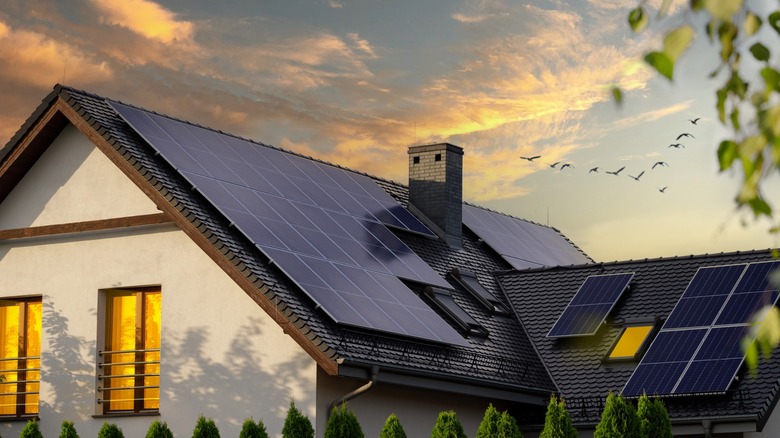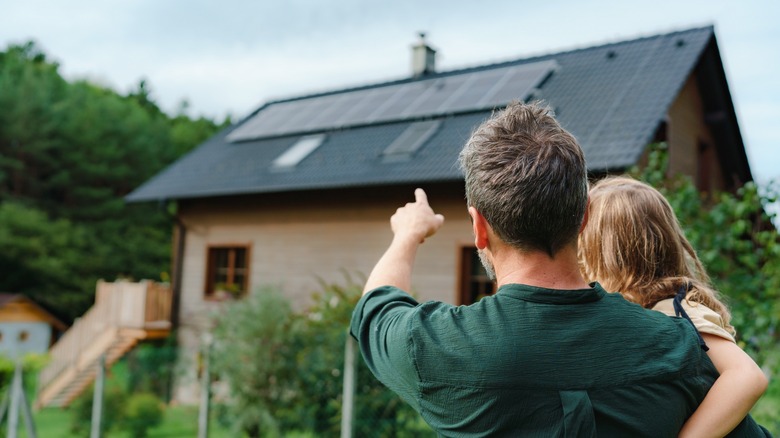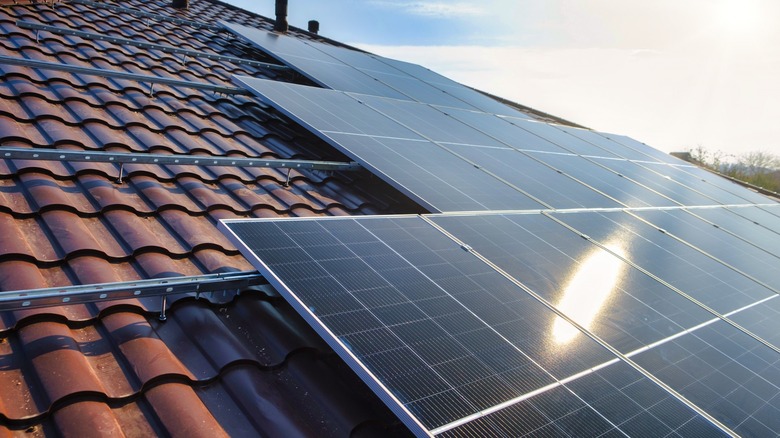How Many Solar Panels Will You Need To Power Your Home?
Every homeowner is in pursuit of a common goal — cheaper utilities. Most people painstakingly do what they can to reduce their water, gas, and electric bills, such as scheduling tasks like laundry and dishwashing around the cheaper off-peak hours. However, most homes have access to a cost-cutting tool that can significantly reduce monthly power bills and play a role in reducing harmful carbon emissions.
Solar panels started to become more accessible to homeowners through the 1970s, but it wasn't until the 21st century that their popularity spiked. While costs have decreased, how much a homeowner will pay for solar panels varies on many factors. Chief among them is the number of solar panels needed, which varies from household to household.
How many solar panels will you need for a new installation? This directly correlates with your home's power consumption. While you can look at your power consumption over the past year, the National Renewable Energy Laboratory (NREL) offers a slightly simplified calculator that can use your address to estimate your annual energy use in kilowatt-hours (kWh) and an average of the solar radiation received daily each month. Still a little confused? Then, let's get into the meat of what these calculations and numbers mean.
Calculating how many solar panels you need
Your home's electricity bill shows the monthly power consumption represented in kWh or the number of kilowatts used every hour. A kilowatt is 1,000 watts (W), or the more common representation of the amount of energy a home appliance may use. For example, a refrigerator that uses 167 W over one hour will use approximately 4 kWh daily.
To determine how many solar panels you need, you'll need your annual kWh usage, which you can find by adding up your monthly kWh for January through December from your electricity bill. Alternatively, you can use the NREL PVWatts calculator, which offers a close estimate by looking at several advanced factors.
You'll also need the production ratio of your region or the amount of electricity produced by solar panels under common weather conditions near your address. Thankfully, there isn't much of a fluctuation throughout the United States and you can use the following maximum production ratios from clean energy provider EnergySage:
- Northeast: 1.3
- Pacific Northwest: 1.15
- Southwest: 1.8
- Mid-Atlantic: 1.35
- Southeast: 1.5
- Mountain West: 1.6
- West Coast: 1.8
- Midwest: 1.3
Finally, you'll need the solar panel's wattage. Divide the annual total wattage needed by the production ratio and then divide that by the wattage of your panels. For this example, let's go with the average of 400 watts per panel. Using an address in Las Vegas as an example, you'll divide 7,157 kWh by 1.8 by 400 W to get approximately 10 panels.
Do any other factors determine how many panels you can have?
While your home's power needs are the primary factor in determining the number of solar panels you need, you must consider a few other things. You may need a dozen 400 W panels to offset your energy consumption, but can your roof handle that load? Do you even have the space on your roof to hold that many panels?
Each panel weighs approximately 40 pounds, and the standard rectangular panel measures 5 feet by 3 feet. For a 10-panel system, that's 400 lbs of weight and a surface area of 150 square feet. The average roof size typically ranges from 1,000 to 3,000 square feet. Even at 3,000 square feet, meaning most homes could support a rooftop solar panel system barring fixtures like sunroofs and chimneys don't get in the way.
Along with space, you also have to consider the quality of the roof. If it needs repair or is coming up on that 20-year replacement window, you may need to factor that into the cost of your new solar panel installation. Other factors, like regular cleaning will keep panels working their best in the long run.


